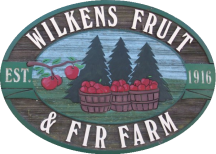Gala
Gala is a cross between Kidd’s Orange Red and a Red Delicious from New Zealand. It is sweet, crisp and granular. It is excellent for fresh eating and good for baking and applesauce.
McIntosh
McIntosh is the dominant commercial apple in New England and eastern Canada today. The first tree was a chance seedling around 1811, on John McIntosh’s farm in Matilda, Ontario; it spread after 1870, but wasn’t widely grown until the 20th century. McIntosh is a thick-skinned, tender-fleshed, perfumed apple; it is a parent of Spartan, Empire, Liberty, and other hardy modern varieties.
Cortland
Cortland, another commercial favorite, is a McIntosh / Ben Davis cross (1915). It ripens a week later than McIntosh, and may be larger, though not as flavorful. It’s flesh is slow to brown after cutting, so it is ideal for apple salads.
Baldwin
Baldwin was the Northeast’s most important market apple from about 1850 until World War I. The original Baldwin tree was a chance seedling on a Lowell Massachusetts farm in the 1700s. Col. Loammi Baldwin promoted and propagated it outside of Lowell after the Revolution. A large, late-season, “winter” variety, Baldwins have a tart, sprightly taste, tough skin, and are excellent keepers. The trees are large and productive but tend to bear fruit biennially. Many Baldwin orchards were lost in severe 1930’s winters, and replaced with McIntosh trees.
Golden Delicious
Golden Delicious has no relation to Red Delicious – except that it was also bought, promoted and named by Stark Bros. Nurseries. It originated around 1900 in West Virginia. Very popular today, it has a sweet and delicate flavor, and is a good keeper. Golden Delicious is a parent of the modern varieties Jonagold, Sparigold, Gala, and Mutsu.
Red Delicious
Red Delicious is the most widely grown apple in the U.S. today. The first seedling grew in 1872 on a farm in Peru, Iowa; Stark Bros. Nurseries bought the rights to it in 1894 and promoted it heavily. Red Delicious is a juicy, sweet, mild
apple for eating, not cooking. Trees are productive and adaptive, but grow best outside the North.
Jonamac
Jonamac is a cross between a Jonathan and a McIntosh originating at Cornell University in New York. It is firm, crisp, sweet and tart. It is similar to a McIntosh but superior.
Empire
Empire is a cross between a Delicious and a McIntosh originating from upstate New York. It is tart, very crisp and firm. It is excellent for fresh use and good for baking and salads.
Winesap
Winesap is a small English cider apple, which was brought to Virginia in colonial times. Although tart, crisp, flavorful, and an excellent keeper, modern refrigeration has helped reduce its commercial popularity. Winesap grows best in the temperate mid-Atlantic, lower Midwestern, and western states
Fuji
Fuji is a cross between a Red Delicious and Ralls Janet from Japan. It is a late season apple that is very aromatic and excellent for storage.
Ida Red
The Ida Red was introduced into the US in 1942 by Jonathan cross. Having a firm texture and a mildly tart flavor, the Ida Red is a good keeper and can be eaten fresh or used in baking.
Gravenstein
Gravenstein is an early season European or Russian variety which had arrived in the U.S. by the 1820s. Large and tart, outstanding for applesauce and pies, Gravensteins ripen over several weeks on the tree – a disadvantage commercially but good for home grower. Only a fair keeper; also reputed to be “absolutely the squirtiest” apple.
Rhode Island Greening
First grew in 1748 in Newport, Rhode Island at the tavern of a Mr. Green. Guests took away scions of the tree to adjoining states, making it one of the first varieties propagated widely throughout the colonial Northeast. The fruit is juicy,
tart, and distinctively flavored, excellent for both cooking and eating, with smooth, oily skin. When fully ripe on the tree, the skin becomes yellower and the flesh sweeter.
Wolf River
Wolf River is a seedling Alexander, a hardy Russian apple brought to America in the early 1800s. It originated near Wolf River, Wisconsin before 1881. A midseason apple grown best in northern climates, it is large, thick-skinned, tart, and aromatic.
Macoun
Macoun is another McIntosh hybrid (1923), also larger than its parent, but better flavored to boot, and a better keeper. One of the Northeast’s finest dessert apples; good for cooking, too.
Northern Spy
Northern Spy is many people’s favorite cold-country apple for both eating and cooking. Tart, fresh-flavored, and a superior keeper, its biennial crops and thin-skinned fruit have kept it from commercial popularity in the 20th century. The trees bloom late, and apples may still be ripening on the trees in November or even December. Northern Spy was first grown near Rochester, New York around 1800, and became widely known soon after the Civil War.
